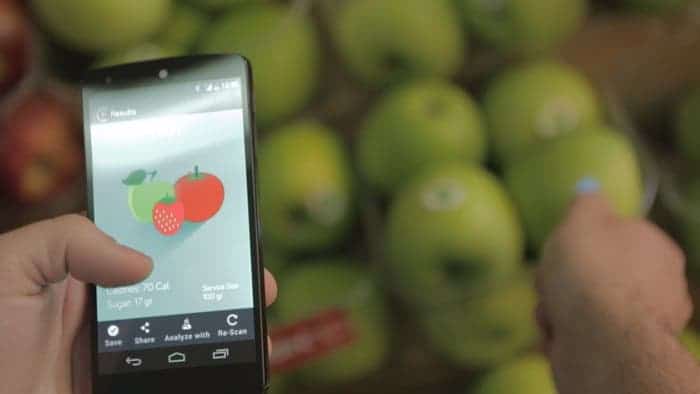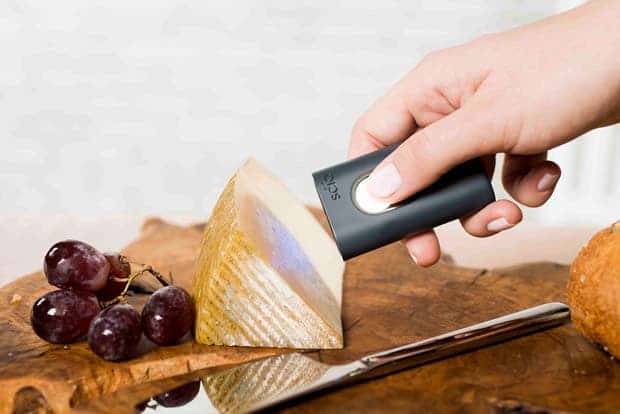One of the most exciting gadgets we’ve seen at CES Las Vegas this year comes from a French startup called DietSensor, which collaborated with Israeli company Consumer Physics. Their latest product called SCiO is a pocket-sized device that uses near-infrared spectroscopy to tell you how many carbs or calories are found inside your food.
Just like any spectrometer, the SCiO analyzes the chemical makeup of food and drink by working out the complex interactions between molecules and light. Basically, by analyzing the unique optical signature of the scanned material, it’s possible to determine what it’s made out of. That being said, the SCiO should work with anything: food, drink, pills, plants, dogs. The problem is it won’t be that helpful if you use it for anything other than food – heterogeneous food, to be more precise.
If you point the device on a piece of cheese or bread, it will tell you the fat content and carbs. Because it also comes with an app, all this data can be integrated so you receive custom tips like “hey stop off that cheese, because you already had 23grams already”. Those with medical conditions like diabetes who need to be very careful what they eat or drink might benefit the most from the device.
Now, a spectrometer isn’t that much of a big deal. They’ve been around for decades. What’s impressive about the SCiO is its size, given most spectrometers are the size of a microwave oven. At the same time, the small size should make you skeptical of its accuracy.
According to its developers, the SCiO was scaled down by handling the analysis itself externally, while the handheld gadget only takes the samples. First, the SCiO shines a light on a sample (food), and once this light is reflected the device extracts the molecular fingerprint of that sample. The user then connects via a smartphone or tablet to the Consumer Physics’ database of physical matter and when it finds a match, it returns a result.
“SCiO is unique as it is based on a tiny spectrometer, designed from the ground up to be mass-produced at low cost with minimal compromise on the available application. This unique feature is achieved by several technology breakthroughs our team has made in the past few years, as we reinvented the spectrometer around low-cost optics and advanced signal processing algorithms,” the company writes on its website.
The SCiO scanner is available for $249. Consumer Physics has raised more than $10 million via Kickstarter, as well as a round of funding from Khosla Ventures, crowdfunding platform Ourcrowd, strategic investors, and angels.











